Sōhei And Yamabushi: Fearsome Ancient Warrior Monks Of Japan
Ellen Lloyd - AncientPages.com - In Europe, the Knights Templar were the first known warrior monks, active during the Crusades.
However, warrior monks did not only exist in Europe. In other parts of the world, like Japan, religious organizations trained monks to live an ascetic lifestyle and engage in violent conflicts by becoming great warriors.
Credit: Adobe Stock - satoriartworkco
The Sōhei were deeply religious, yet they were regarded as fearsome warriors. The Yamabushi were mysterious mountain-wandering warrior monks searching for spiritual and supernatural powers. They, too, could be very violent and dangerous.
Sōhei: Powerful Buddhist Warrior Monks Of Medieval And Feudal Japan
The Sōhei were influential Buddhist warrior monks of both medieval and feudal Japan. These monk soldiers were easily recognizable because of the white cowls they wore over their heads which were shaved, like all monks. The Sōhei first appeared during the Heian period from 794 to 1185.
It is the period in Japanese history when Buddhism, Taoism, and other Chinese influences were at their height.
The reason why the Sōhei became warriors was power and control. The warrior monks played a vital role when bitter political feuds began between different temples, different subsects of Buddhism, over imperial appointments to the top temple positions.
In the 10th century, the Emperor and his government still retained a great deal of power. This power included appointing which monk would run a particular temple. However, the factional divisions within Buddhist monks and the simple realities of palace politics meant that a member of one faction was appointed as the head of a temple controlled by a rival faction. A dispute between two shrines led to the establishment of a standing army of monks at the Yasaka Shrine in Kyoto. It led to a warrior monk arms race.
Sometimes the disputes ended, and there was peace, but a new conflict arose, and the monk went to war again.
The Sōhei employed a variety of weapons. The most common sword was the tachi, a traditional sword worn by the Samurai warriors. The warrior monks also used blades, daggers, and the heavy kanabō, a large club forged of solid iron.
Credit: Adobe Stock - Roman Samokhin
At some point, the Sōhei co-existed with Samurai warriors during the same period.
Yamabushi: Mountain-Wandering Warrior Monks Searching For Spiritual And Supernatural Powers
The mysterious Yamabushi were mountain-wandering warrior monks searching for spiritual and supernatural powers.
Although they mainly kept to themselves for the most part solitary, they did form loose confederations and associations with certain temples occasionally. They also sometimes participated in battles and skirmishes alongside Samurai and Sōhei warrior monks.
The Yamabushi emerged in the eighth and ninth centuries in Japan.
Their beliefs were based on pieces from different religions. The Yamabushi believed that to become spiritually enlightened, one must have a close relationship with nature over a long time.
They also believed that communing with nature would give a person supernatural powers. During their long journeys, the Yamabushi often had to defend themselves, which is why they were trained in martial arts.
Religion combined with violence stretches far back in our history.
Written by Ellen Lloyd – AncientPages.com
Updated on August 12, 2022
Copyright © AncientPages.com All rights reserved. This material may not be published, broadcast, rewritten or redistributed in whole or part without the express written permission of AncientPages.com.
More From Ancient Pages
-
 Stunning Underwater Photos Reveal Secrets Of Legendary Lost City Of Heracleion
Featured Stories | May 4, 2013
Stunning Underwater Photos Reveal Secrets Of Legendary Lost City Of Heracleion
Featured Stories | May 4, 2013 -
 How King Arthur Became One Of The Most Pervasive Legends Of All Time
Featured Stories | Feb 12, 2017
How King Arthur Became One Of The Most Pervasive Legends Of All Time
Featured Stories | Feb 12, 2017 -
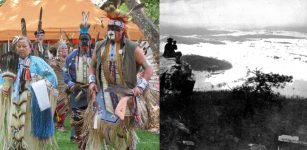 Ancient Native American Stories Of Great Floods In Tennessee Confirmed By Scientists – 1867 Flood Was Not The Worst One
News | Aug 26, 2020
Ancient Native American Stories Of Great Floods In Tennessee Confirmed By Scientists – 1867 Flood Was Not The Worst One
News | Aug 26, 2020 -
 On This Day In History: First Recorded Passage Of Halley’s Comet Observed By Chinese Astronomers – On Mar 30, 240 BC
News | Mar 30, 2016
On This Day In History: First Recorded Passage Of Halley’s Comet Observed By Chinese Astronomers – On Mar 30, 240 BC
News | Mar 30, 2016 -
 5,000-Year-Old Perga City And Kommagene Civilization: Most Of Treasures Are Still Underground
Archaeology | Dec 30, 2017
5,000-Year-Old Perga City And Kommagene Civilization: Most Of Treasures Are Still Underground
Archaeology | Dec 30, 2017 -
 Why Was The Moretta Mask So Popular?
Ancient History Facts | Feb 14, 2020
Why Was The Moretta Mask So Popular?
Ancient History Facts | Feb 14, 2020 -
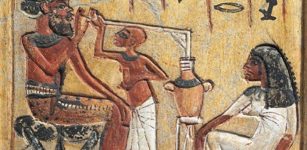 5,000 Years Old Beer Enjoyed By Egyptian Pharaohs Recreated
Archaeology | May 23, 2019
5,000 Years Old Beer Enjoyed By Egyptian Pharaohs Recreated
Archaeology | May 23, 2019 -
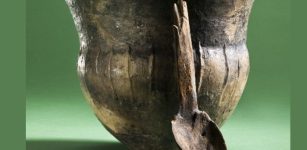 Early Farmers On The Baltic Coast Incorporated Fish Into Their Diets 6,000 Years Ago
Archaeology | Oct 17, 2023
Early Farmers On The Baltic Coast Incorporated Fish Into Their Diets 6,000 Years Ago
Archaeology | Oct 17, 2023 -
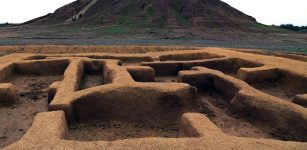 Climate Change May Have Impacted The Rise And Fall Of Middle Eastern Civilizations
Archaeology | Jan 19, 2023
Climate Change May Have Impacted The Rise And Fall Of Middle Eastern Civilizations
Archaeology | Jan 19, 2023 -
 Iktomi – Native American Spider-Trickster Spirit Whose Stories Teach Moral Values
Featured Stories | Jan 28, 2019
Iktomi – Native American Spider-Trickster Spirit Whose Stories Teach Moral Values
Featured Stories | Jan 28, 2019 -
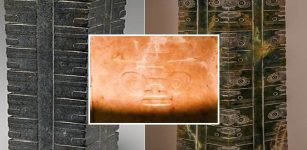 Mysterious Ancient Figure Depicted On A Jade Cong May Re-Write History Of China
Artifacts | Oct 11, 2019
Mysterious Ancient Figure Depicted On A Jade Cong May Re-Write History Of China
Artifacts | Oct 11, 2019 -
 Largest Viking-Age Building In Britain Has Been Found In Cumbria!
Archaeology | Feb 18, 2025
Largest Viking-Age Building In Britain Has Been Found In Cumbria!
Archaeology | Feb 18, 2025 -
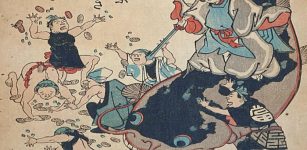 Odd Monster Namazu ‘Earth Shaker’ Was First Feared By People And Later Worshiped As Luminous Deity Repairing The World
Featured Stories | Feb 3, 2024
Odd Monster Namazu ‘Earth Shaker’ Was First Feared By People And Later Worshiped As Luminous Deity Repairing The World
Featured Stories | Feb 3, 2024 -
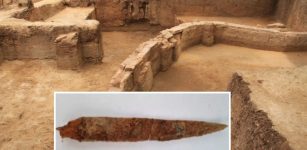 Rare Well-Preserved 2,500-Year-Old Dagger Linked To The Keeladi Civilization Discovered In Tamil Nadu, India
Archaeology | Aug 13, 2021
Rare Well-Preserved 2,500-Year-Old Dagger Linked To The Keeladi Civilization Discovered In Tamil Nadu, India
Archaeology | Aug 13, 2021 -
 New Insights Into The Dawn Of The Indo-European Languages
Linguistic Discoveries | Jul 27, 2023
New Insights Into The Dawn Of The Indo-European Languages
Linguistic Discoveries | Jul 27, 2023 -
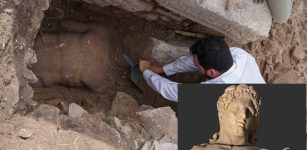 Stunning Well-Preserved Larger Than Life Statue Of Hercules Discovered In Philippi, Greece
Archaeology | Sep 24, 2022
Stunning Well-Preserved Larger Than Life Statue Of Hercules Discovered In Philippi, Greece
Archaeology | Sep 24, 2022 -
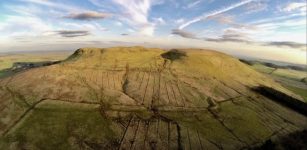 Study Sheds Light On Life Beyond Rome’s Frontier
Archaeology | Jun 2, 2022
Study Sheds Light On Life Beyond Rome’s Frontier
Archaeology | Jun 2, 2022 -
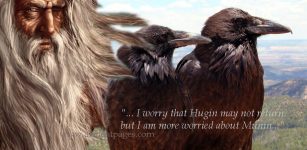 Huginn and Muninn: Powerful Ravens Of Odin, Supreme God In Asgard In Norse Mythology
Featured Stories | Dec 7, 2017
Huginn and Muninn: Powerful Ravens Of Odin, Supreme God In Asgard In Norse Mythology
Featured Stories | Dec 7, 2017 -
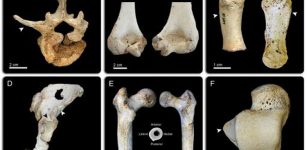 Human Body Has Gone Through Four Stages Of Evolution – New Study
Human Beginnings | Sep 1, 2015
Human Body Has Gone Through Four Stages Of Evolution – New Study
Human Beginnings | Sep 1, 2015 -
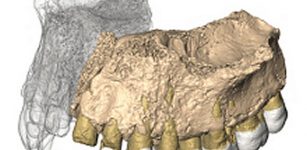 Earliest Modern Human Fossil Outside Africa Unearthed At Misliya Cave, Israel
Archaeology | Jan 27, 2018
Earliest Modern Human Fossil Outside Africa Unearthed At Misliya Cave, Israel
Archaeology | Jan 27, 2018


